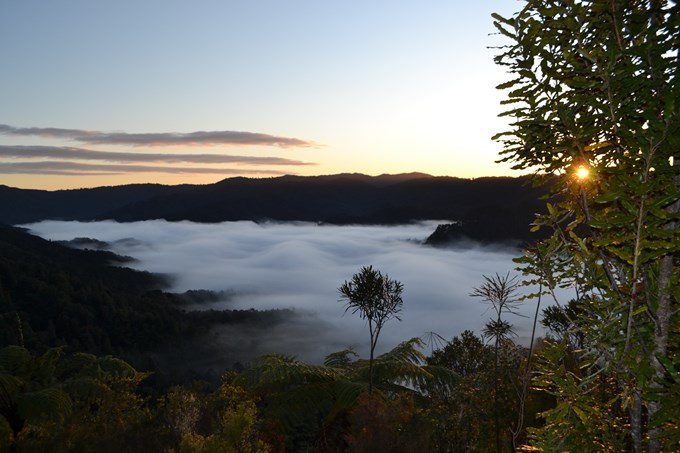Flourishing foliage and signs of new life in the kōkako population are the first signs of a successful pest control programme in the Hunua Ranges this year.
Biodiversity manager and operational lead for the project Rachel Kelleher says the first round of monitoring, following the aerial application of 1080 over a 21,500 hectare area, is complete, and rat and possum numbers are at an all-time low.
“We are delighted to report the result for possums was 0.65 per cent and 1.03 per cent for rats – significantly lower than our target. This is a substantial reduction in both pest species but particularly rats, which were tracking at 91.6 per cent ahead of the operation,” she says.
No rats or mice have been recorded whatsoever within the intensively managed 1150 hectare kōkako management areas.
Councillor George Wood, chair of the Regional Strategy and Policy Committee which lead the change to pest management methodology in this area, says the council is extremely pleased with the outcome of the programme.
“It was a courageous decision to go for a 1080-based approach to targeting pests in the Hunua Ranges, and it was the right one.
“Using any pest control toxin requires careful consideration and robust operational planning. 1080 is not the only tool we have for fighting pests but, right now, it is the most effective way to prevent wholesale destruction of treasured flora and fauna,” he says.
Reminder for dog owners
Visitors to Hunua Ranges, Waharau and Whakatiwai regional parks must remain aware they are entering an area recently treated with a toxin for some months to come. Signs will remain in place until early 2016.
This caution period is one of the operational requirements of using a toxin like 1080 and is a reminder to visitors that they may encounter bait that hasn’t yet broken down or pest animal carcasses.
1080 is deadly to dogs and dog owners should take particular care, both inside and close to the operational area, to make sure dogs are not allowed to scavenge carcasses.
Late breaking news from the kōkako monitoring team
Our contractor has just found the first nest (ever) being sat on by a pair of kōkako outside of the intensively managed area (pairs have been observed outside the managed area previously but no nests ever seen).
A monitoring plan is being put in place for this nest and others, and we’ll provide progress updates in the coming weeks.



